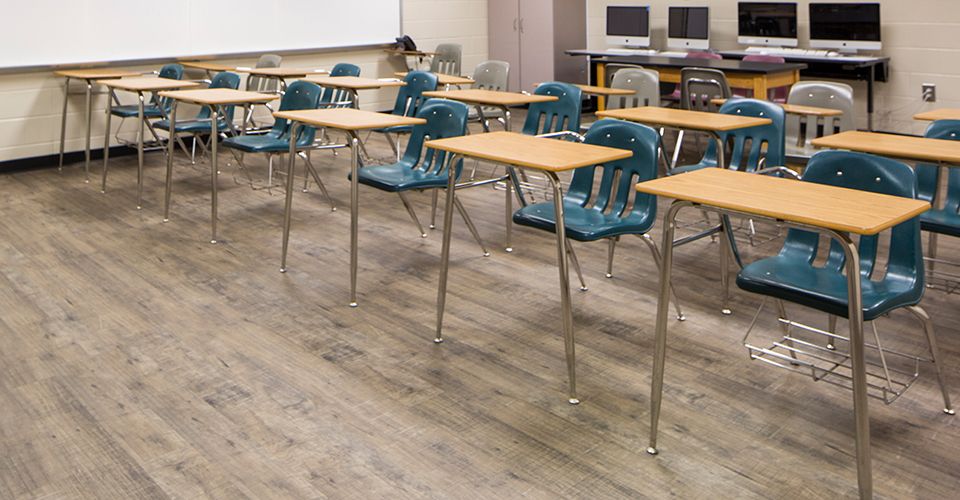Sound expert Julian Treasure previously discussed how acoustics in the workplace are key to worker productivity and health. But how does that apply to the educational environment? How does noise affect students and teachers in the classroom?
Acoustics in Education
Bad acoustics in schools can be a big problem.
In a typical classroom, noise levels average around 65 decibels (dBs) — the threshold for serious health damage with long-term exposure. Higher noise levels have proven negative effects on health. For students, it can lead to lower academic performance, since students have to work harder in order to understand their lessons. And for teachers, higher noise levels can mean a loss of voice for having to talk louder to be heard, and a higher risk of heart attack1 caused by a sustained increase in heart rate over time.
Clearly, something has to be done to make schools a better acoustic environment for everyone.
Solutions for Acoustics in Schools
Luckily, designing and retrofitting schools for acoustic benefit is not as difficult as it may seem.
Solutions such as replacing regular ceiling tiles with acoustic panels, or installing sound absorbers on classroom walls are viable approaches to the noise problem. But one of the most effective methods of improving school acoustics is sound absorbent flooring.
A floor that absorbs 30% of airborne noise is a great acoustic fix for schools. When it comes to flooring, carpet with an acoustic underlayer would be best in classrooms, but luxury vinyl tile (LVT) with Sound ChoiceTM is a great alternative thanks to its durability and easiness to clean. Acoustic standards help separate flooring products with real acoustic benefit from other, less sound-reducing products.
Acoustics Case Study: Dawson County High School
The benefits of better acoustic flooring came to life at Dawson County High School in Dawsonville, Georgia. When school staff and students returned for the new school year, they were greeted by inviting updates to the main building.
New Interface carpet tile and LVT replaced the cold, noisy VCT floors in classrooms, hallways, and offices. The changes have not gone unnoticed. “People say it feels a lot less institutionalized, more like home,” says Scott Morgan, director of facilities and maintenance for Dawson County Schools. “The LVT makes the most difference. Everybody loves it. There are two things everybody talks about. That it’s softer on the feet and somehow it just helps with the sound.”
Download the entire case study to learn more about how Interface flooring created a better acoustic environment for Dawson County High School here.
Why Good Acoustics in Schools are Important
For those who spend the majority of their days in school environments, acoustics matter. Research shows that quieter classrooms improve academic performance, reduce stress for teachers, and better student behavior. A good classroom experience leads to increased productivity. And, it creates a better quality of life and improved sense of well-being for teachers and students alike.
The benefits of good acoustics in schools are numerous. Designers, administrators, and facilities managers who are responsible for the educational environment should be paying attention.
References
1 Tiesler, Gerhart & Oberdörster, Markus. (2008). Noise – A Stressor? Acoustic Ergonomics of Schools. Building Acoustics. 15. 249-261. 10.1260/135101008786348690.


One response to “Why Schools Need Good Acoustics”
Thank you for sharing! It is really worth sharing and also it was very helpful choosing Acoustic flooringin from Trade Flooring.